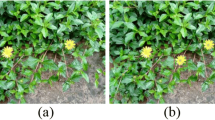Abstract
As the commonest part of social networks, sharing an image in social networks transmits not only can provide more information, but also more intuitive than any text. However, images also can leak out information more easily than text, so the audit of image content is particularly essential. The disclosure of a tiny image, which involves sensitive information about individual, society even the state, may trigger a series of serious problems. In this paper, we design an image firewall to detect sensitive image content through joint sparse representation on features. We take LBP, SIFT and Wavelet features into consideration, trying to find an effective combination among these features. We also find some features, which have the same accuracy but less time cost. In addition, we consider the spatial relation of the detected objects, especially the distance between the persons appeared in an image. Experimental results show the effectiveness of the proposed methods.
Access this chapter
Tax calculation will be finalised at checkout
Purchases are for personal use only
Similar content being viewed by others
Notes
- 1.
- 2.
- 3.
- 4.
- 5.
- 6.
References
Smith, L.I.: A tutorial on principal components analysis. Inf. Fusion 51(3), 52 (2002)
Yuan, X.T., Liu, X., Yan, S.: Visual classification with multitask joint sparse representation. IEEE Trans. Image Process. Publ. IEEE Sig. Process. Soc. 21(10), 4349–4360 (2012)
Hu, D., et al.: A framework of privacy decision recommendation for image sharing in online social networks. In: IEEE First International Conference on Data Science in Cyberspace IEEE Computer Society, pp. 243–251 (2016)
Beck, A., Teboulle, M.: A fast iterative shrinkage-thresholding algorithm for linear inverse problems. SIAM J. Imaging Sci. 2(1), 183–202 (2009)
Candès, E.J., Romberg, J.K., Tao, T.: Stable signal recovery from incomplete and inaccurate measurements. Commun. Pure Appl. Math. 59(8), 1207–1223 (2005)
Wright, J., et al.: Robust face recognition via sparse representation. IEEE Trans. Pattern Anal. Mach. Intell. 31(2), 210 (2009)
Becker, S., Bobin, J., Candès, E.J.: NESTA: a fast and accurate first-order method for sparse recovery. SIAM J. Imaging Sci. 4(1), 1–39 (2009)
Hu, X., et al.: How people share digital images in social networks: a questionnaire-based study of privacy decisions and access control. Multimedia Tools Appl. 1–23 (2017). doi:10.1007/s11042-017-4402-x
Lazebnik, S., Schmid, C., Ponce, J.: Beyond bags of features: spatial pyramid matching for recognizing natural scene categories. In: 2006 IEEE Computer Society Conference on IEEE Computer Vision and Pattern Recognition, pp. 2169–2178 (2006)
Yang, J., et al.: Linear spatial pyramid matching using sparse coding for image classification, pp. 1794–1801 (2009)
Wang, J., et al.: Locality-constrained linear coding for image classification. In: Computer Vision and Pattern Recognition IEEE, pp. 3360–3367 (2010)
Acknowledgements
This work was supported by the National Natural Science Foundation of China (Nos. 61375047 & 61672203), National Innovation and Entrepreneurship Training Program project funding (No. 201510359033) in Hefei University of Technology, 2015. Our server is supported by Network Center of Hefei University of Technology.
Author information
Authors and Affiliations
Corresponding author
Editor information
Editors and Affiliations
Rights and permissions
Copyright information
© 2017 Springer International Publishing AG
About this paper
Cite this paper
Wang, Z., Ling, N., Hu, D., Hu, X., Zhang, T., Zhao, Zq. (2017). Image Firewall for Filtering Privacy or Sensitive Image Content Based on Joint Sparse Representation. In: Huang, DS., Hussain, A., Han, K., Gromiha, M. (eds) Intelligent Computing Methodologies. ICIC 2017. Lecture Notes in Computer Science(), vol 10363. Springer, Cham. https://doi.org/10.1007/978-3-319-63315-2_48
Download citation
DOI: https://doi.org/10.1007/978-3-319-63315-2_48
Published:
Publisher Name: Springer, Cham
Print ISBN: 978-3-319-63314-5
Online ISBN: 978-3-319-63315-2
eBook Packages: Computer ScienceComputer Science (R0)




